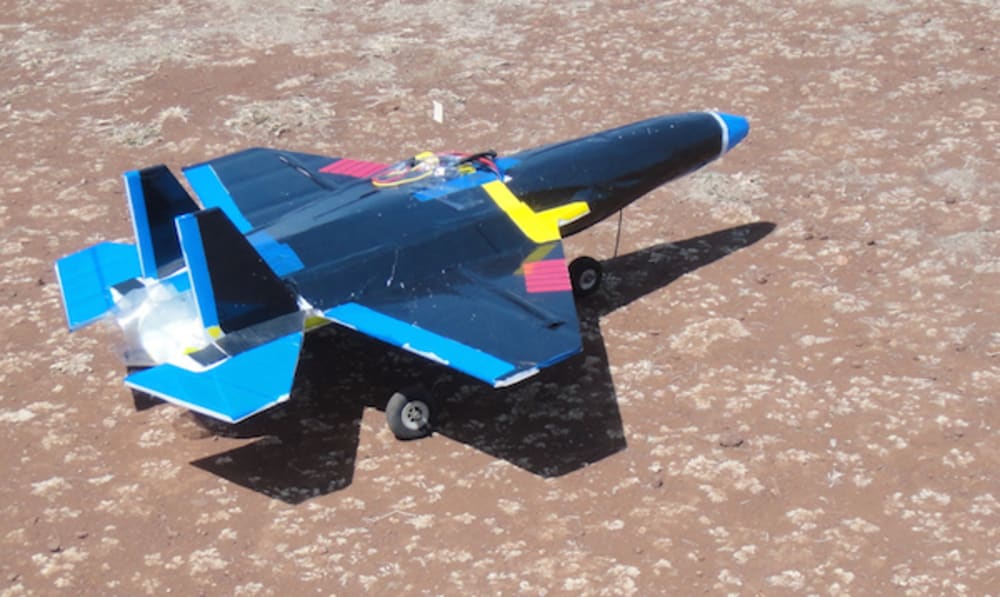Our work describes the design, fabrication and flight testing of an RC aircraft (for surveillance) powered with an Electric Ducted Fan (EDF). The configuration and layout of the aircraft was inspired by MiG-29 and F-35B; hence it has a swept high wing, aft horizontal tail and twin vertical tail configuration. It has a single short fuselage with centrally mounted EDF at rear, with a belly intake. A methodology for conceptual sizing and design calculations was developed, which included weight breakdown, drag characteristics, constraint analysis, final sizing and performance estimation. The aircraft was sized for rolled takeoff and landing, but can also be hand-launched. A real time vision camera has also been installed at the bottom of the nose which provides live wireless feed to a hand held monitor.
The various components of the aircraft viz., wings and empennage were fabricated out of closed cell Styrofoam sheets and fuselage with intakes out of packaging high density Polystyrene. A wooden rod of square section was used to attach the wings with the fuselage as a cantilever. Servo motors were used to deflect the control surfaces. Several successful flight tests were carried out, and the pictures and videos of some of these flights were recorded.
The work highlights the design challenges that were experienced and overcome during this project, and presents the details of the sizing methodology and results.
These kind of aircraft are not currently used in Indian defense sector. If inducted in defense service, these aircraft could prove very cost effective because of their substantially smaller size than the presently available aircraft used for surveillance. Moreover, these aircraft are non polluting. Hand launch capability adds further functional utility to them. Loss due to crash will also be substantially lesser. Above mentioned advantages shall further make aerial surveillance increasingly safer and economical.
Civilian sector too provides many opportunities for application of these aircraft in rescue operations, damage assessment, coast guarding, crowd and traffic assessment, climate analysis, warning systems initiation ( tsunamis, cyclones) etc.
This project can be seen as a pilot effort towards the start of a research in the direction of RC aircraft being increasingly inducted in both military and civilian services.
We intend to to further our work so as to provide vertical takeoff and landing capability to the aircraft which shall make these aircraft even more attractive proposition both functionally and commercially.
Video
Like this entry?
-
About the Entrant
- Name:Chetan Dusane
- Type of entry:teamTeam members:Chetan Dusane, Amit Wani , Shashank Bochare
- Software used for this entry:MATLAB 7.1
- Patent status:none

